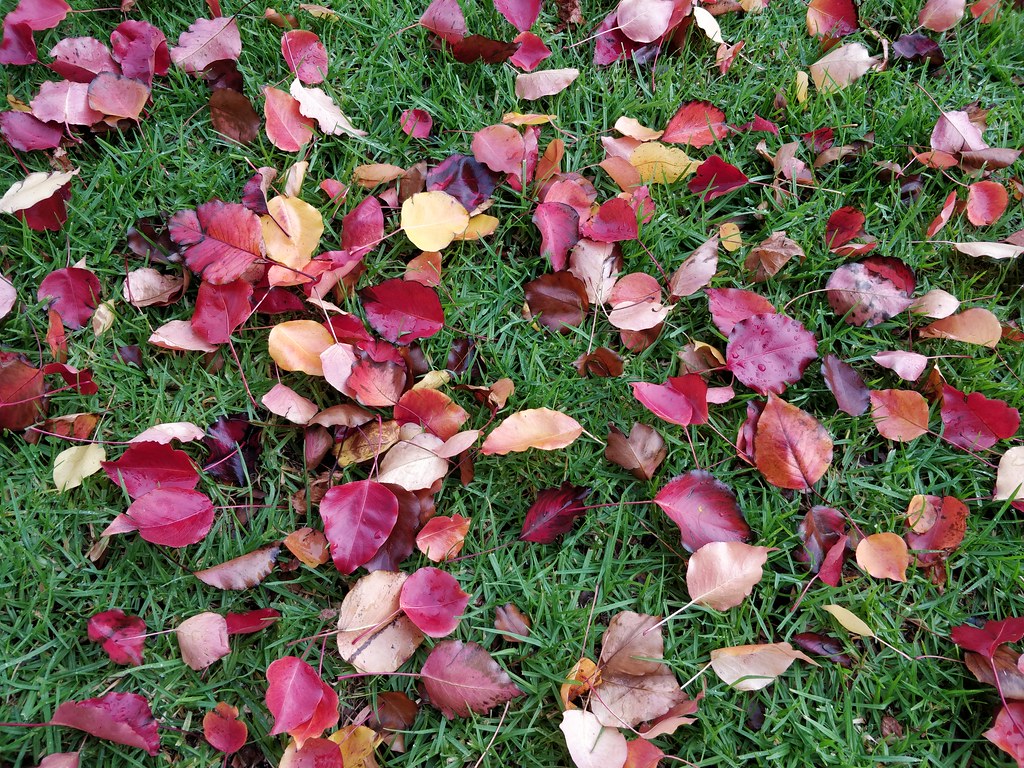If you’ve noticed the leaves on your pear tree prematurely turning red, it likely signals an underlying problem. While pear trees naturally display brilliant fall colors, early reddening of leaves usually indicates environmental stress, pest damage, or disease.
Let’s explore the common reasons for pear leaves turning red ahead of autumn and what you can do to restore your tree’s health.
Natural Causes of Red Pear Tree Leaves
Before assuming something is wrong with your pear tree, first consider whether natural seasonal changes are causing the red foliage.
Fall Colors
Pear leaves transforming from green to vivid reds and oranges in late summer or autumn is perfectly normal. Many varieties put on a show of color before the leaves drop in fall. Enjoy this seasonal display as long as most leaves remain on the tree until late fall.
Early Frost
If an unseasonably early cold snap hits when leaves are still green the frost can damage the tender tissue. Leaves will soon turn red or purple from the chill. As long as damage is minimal the tree should recover when warmer weather returns.
Problems Causing Premature Reddening of Leaves
When pear leaves start turning red well before fall it’s usually a red flag signaling the tree is stressed, diseased, or pest-ridden. Here are some common culprits
Insufficient Water
Lack of water causes pear leaves to dry out, turn red, and drop early. Ensure young trees get 1-2 inches of water weekly and mature trees receive deep weekly soakings. Drip irrigation and mulch conserve moisture.
Root Damage
Girdling roots, soggy soil, compacted soil, or mechanical damage can injure roots and prevent proper uptake of moisture an nutrients. Aboveground symptoms include reddening leaves. Carefully inspect roots and improve conditions.
Fire Blight
Fire blight a bacterial disease causes leaves to turn red, wilt, and blacken as branches die. Cankers form on branches and the tree declines. Stop disease spread by pruning well below visible damage.
Pear Decline
Also called pear leaf curl, this phytoplasma disease turns leaves red and stunted. It’s carried by psylla insects. There’s no cure, so control psylla and use resistant rootstocks when planting.
Nutrient Deficiencies
Lack of nitrogen, iron, manganese, or other essential nutrients causes yellowing, then reddening of pear foliage as deficiency worsens. Foliar sprays or soil amendments can correct this.
Root Rot Diseases
Fungal pathogens like Phytophthora and Pythium infect roots, blocking water and nutrients. Leaves redden and dry as the tree declines. Improve drainage and treat disease with fungicides.
Pear Scab
Fungal pear scab first forms olive green spots on leaves. Later, tissue reddens and becomes corky. Rake and destroy fallen leaves to reduce spores. Apply preventive fungicides.
Environmental Stress
Heat, drought, waterlogging, compacted soil, inadequate sunlight, and other environmental stresses can cause premature red leaves. Correct conditions to avoid stress.
What to Do About Red Pear Tree Leaves
If your pear tree is displaying an abnormal amount of red leaves, take these steps:
-
Check for pests like psylla and treat if found. Look for disease symptoms and fungal growth.
-
Test soil moisture and drainage. Water appropriately and amend soil if compacted or boggy.
-
Inspect roots for visible injury, rot, or girdling roots.
-
Apply iron supplements if new growth is pale. Fertilize with nitrogen if needed.
-
Monitor for cankers and prune out diseased wood.
-
Control scab and fungal diseases with approved treatments.
-
Consider transplanting stressed trees to improved growing conditions.
-
Seek expert arborist help if the tree is rapidly declining. They can properly diagnose the issue.
Preventing Premature Reddening of Leaves
With proper care, you can keep your pear tree’s leaves green and healthy into fall:
-
Select disease-resistant varieties when planting.
-
Prune carefully to open the canopy and increase air circulation.
-
Water deeply and consistently during dry periods.
-
Use drip irrigation and mulch to maintain ideal moisture levels.
-
Check soil pH and improve drainage in poorly draining soil.
-
Monitor regularly for pest and disease symptoms and treat early.
-
Fertilize in early spring with a balanced 10-10-10 or organic compost.
-
Provide protection from strong winds and extreme weather shifts.
Be Patient for Recovery
Don’t lose hope if your pear tree experiences reddening leaves before fall. With appropriate solutions matched to the cause, it can recover and regain its lush green color. But patience is required, as it takes time to generate new growth. Address any issues promptly and provide attentive care for your tree.
With some TLC and troubleshooting, you can get your stressed pear tree back to its former glory. Just don’t ignore those red flags provided by the red leaves so action can be taken before lasting damage occurs. A thriving green pear tree will soon be your reward!
Fire Blight in Pear Trees Treatment
FAQ
Why are my pear tree leaves turning red?
Why are my tree leaves turning red?
Why does pear turn red?
How to get rid of rust on pear trees?
- The Ultimate Guide to Growing Strawberries in Raised Beds - August 8, 2025
- No-Dig Garden Beds: The Easiest Way to Grow a Beautiful Garden - August 6, 2025
- How to Protect and Preserve Wood for Raised Garden Beds - August 6, 2025

